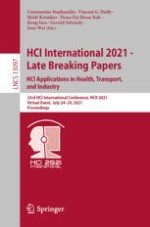2021 | OriginalPaper | Chapter
Investigating the Relationship Between a Driver’s Psychological Feelings and Biosensor Data
Authors : Sara Mostowfi, Jung Hyup Kim, William G. Buttlar
Published in: HCI International 2021 - Late Breaking Papers: HCI Applications in Health, Transport, and Industry
Publisher: Springer International Publishing
Activate our intelligent search to find suitable subject content or patents.
Select sections of text to find matching patents with Artificial Intelligence. powered by
Select sections of text to find additional relevant content using AI-assisted search. powered by
